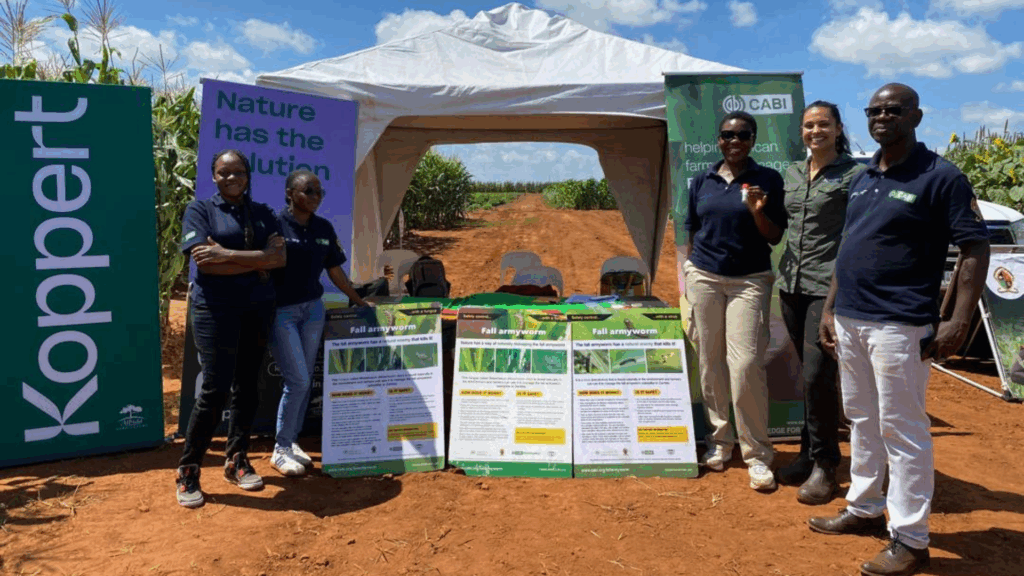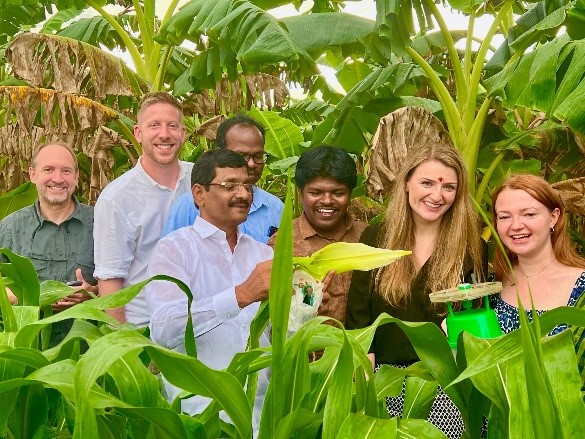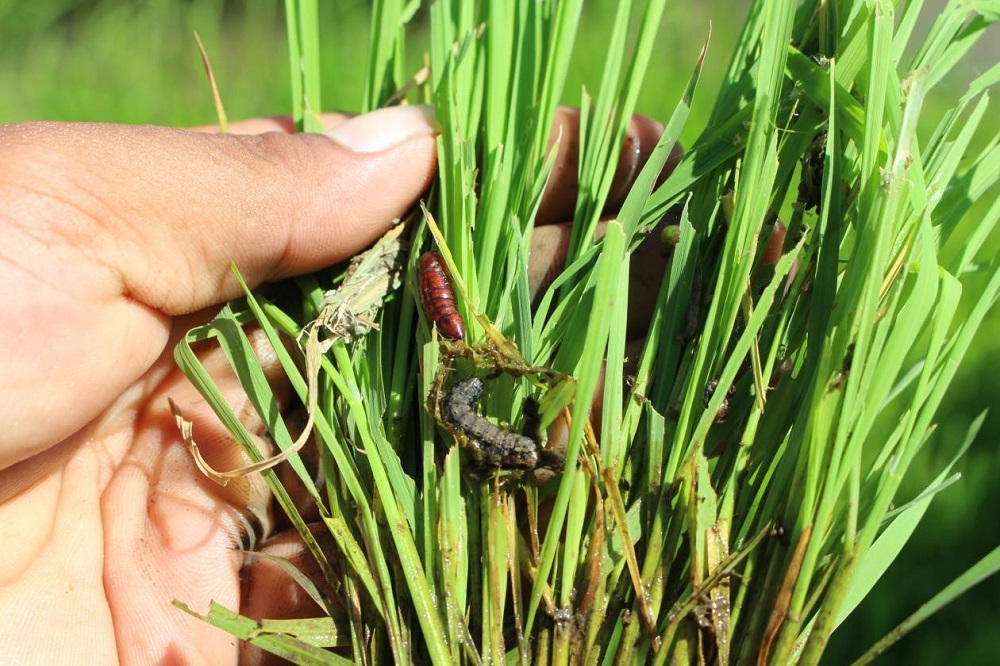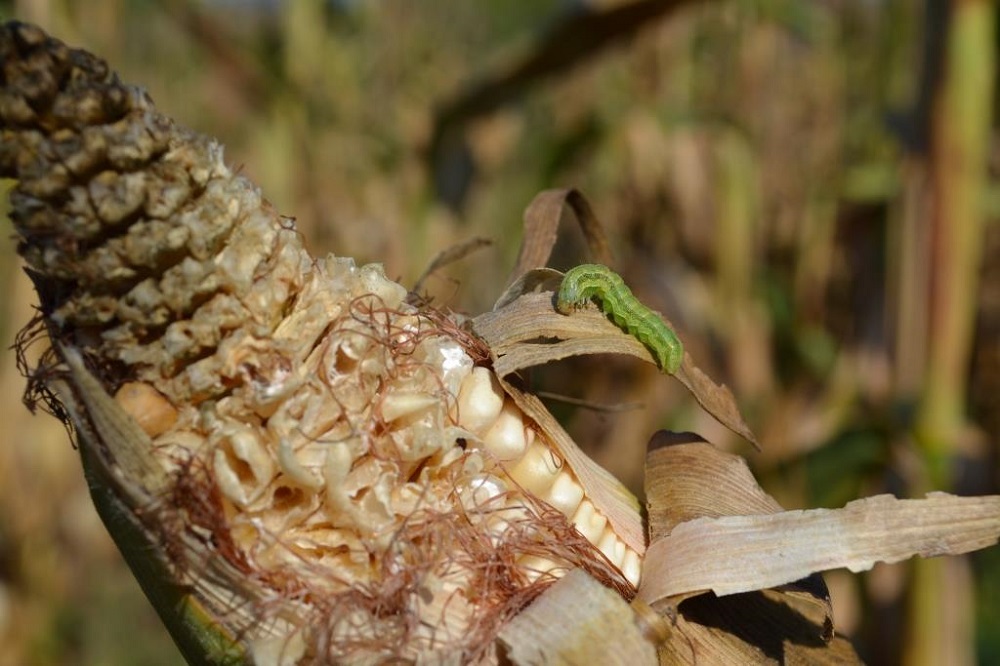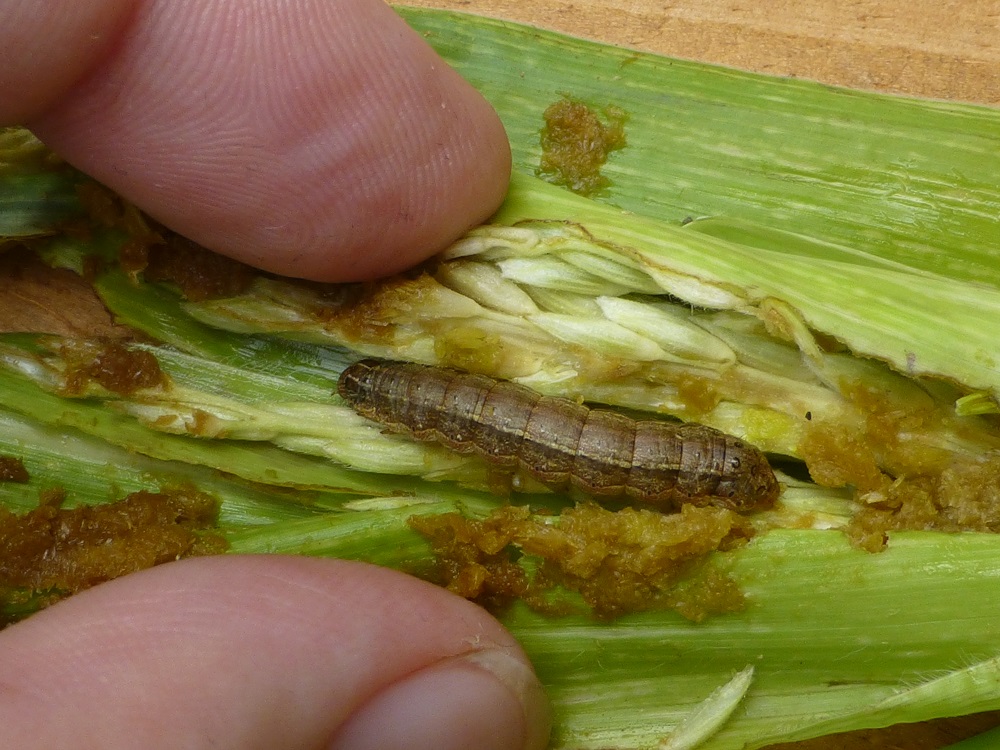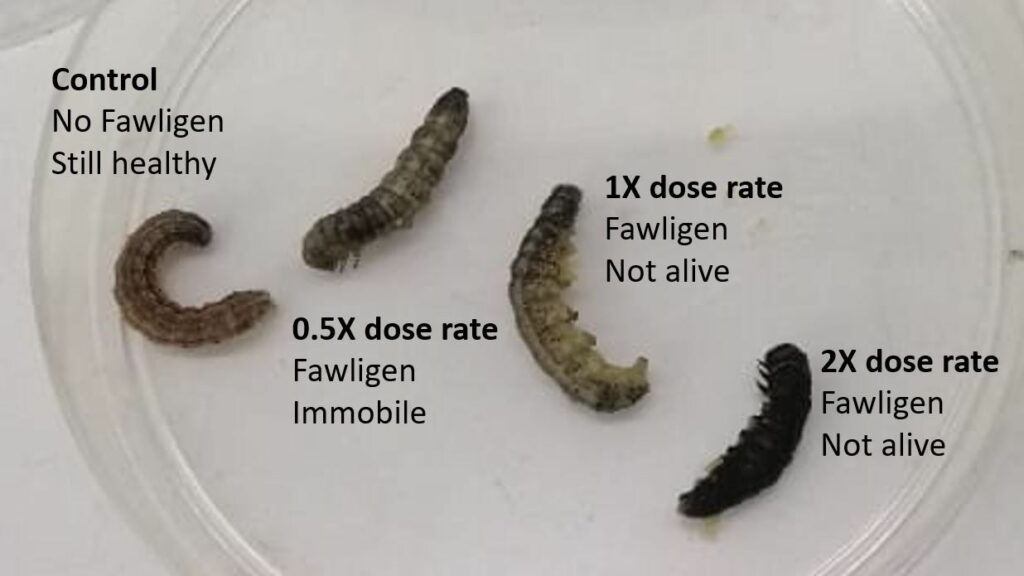Invasives Blog
Tag: fall armyworm
You are here: Invasives Blog
Biological control in action: Zambia’s field days on fighting fall armyworm
June 11, 2025
Muyabango Liywalii
No Comments
CABI training prepares agricultural advisors in Kurdistan Region of Iraq for the invasive fall armyworm pest
May 8, 2025
Stefan Toepfer, Wayne Coles
No Comments
CABI empowers youth in Zambia to establish businesses in biocontrol of fall armyworm
August 19, 2024
Eunice Murathe
No Comments
Study confirms efficacy of three insecticides to fight fall armyworm as part of Integrated Pest Management
June 18, 2024
Wayne Coles
No Comments
Revolutionizing crop protection: Success of a novel approach to combatting fall armyworm in India
August 18, 2023
Wayne Coles
No Comments
Pest Alert issued for fall armyworm pest infesting rice crop in the Philippines
July 26, 2023
Wayne Coles
1 comment
Study examines potential for collective action to fight fall armyworm with biological controls in rural Zambia
May 30, 2023
Wayne Coles
No Comments
New research proposes local Biological Control Agent hubs to fight fall armyworm in Bangladesh
July 27, 2022
Wayne Coles
No Comments
CABI collaborates on research suggesting Asia is a ‘genetic melting pot’ for fall armyworm
June 22, 2022
Wayne Coles
No Comments
Progress made on biological controls to fight crop pests in Malaysia
June 14, 2022
Wayne Coles
No Comments
Subscribe
Find out more
For more information about CABI's work on invasive species, please visit www.invasive-species.org
Contribute
If you are active in the field of invasive species or development and would like to contribute to the Invasives Blog, please contact Donna Hutchinson. We are happy to post credible articles that we think would be of interest to our readership.
Views expressed in contributions do not necessarily reflect official CABI positions.
Archives
Categories
- Agriculture and International Development
- Veterinary and Animal Sciences
- Climate change and biodiversity
- Environmental Sciences
- Invasive species
- Plant Sciences
- Crop health
- Development communication and extension
- Digital development
- Economic development
- Food and nutrition security
- Gender and youth
- Publishing
- Value chains and trade

